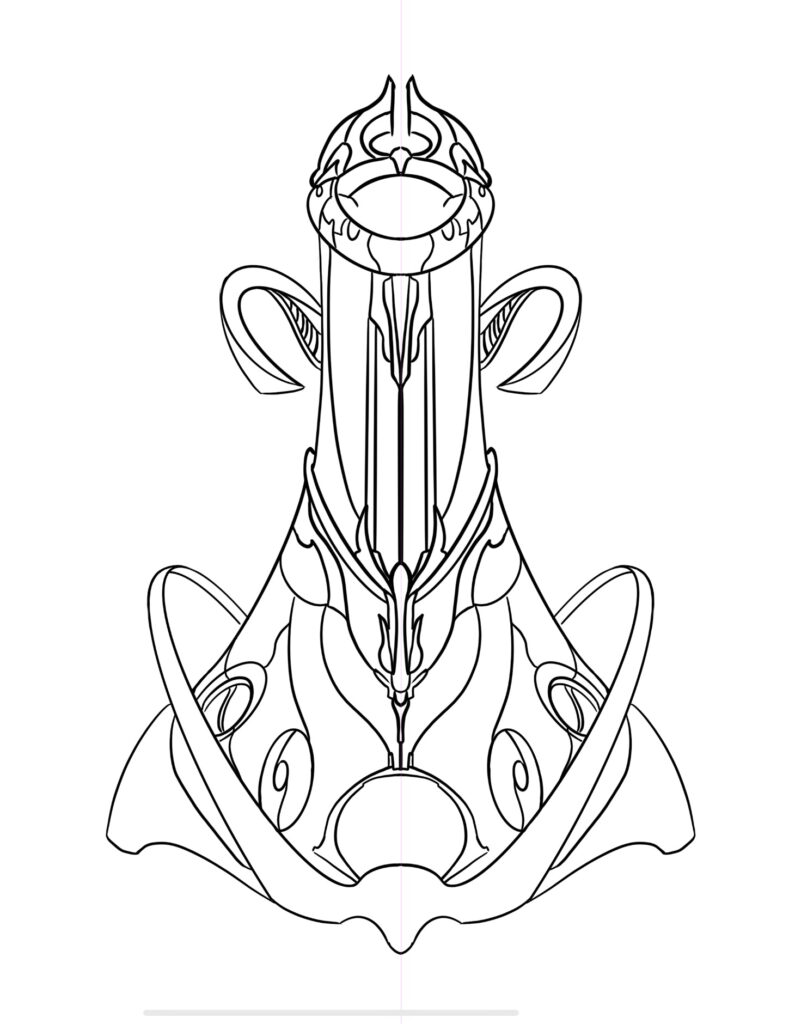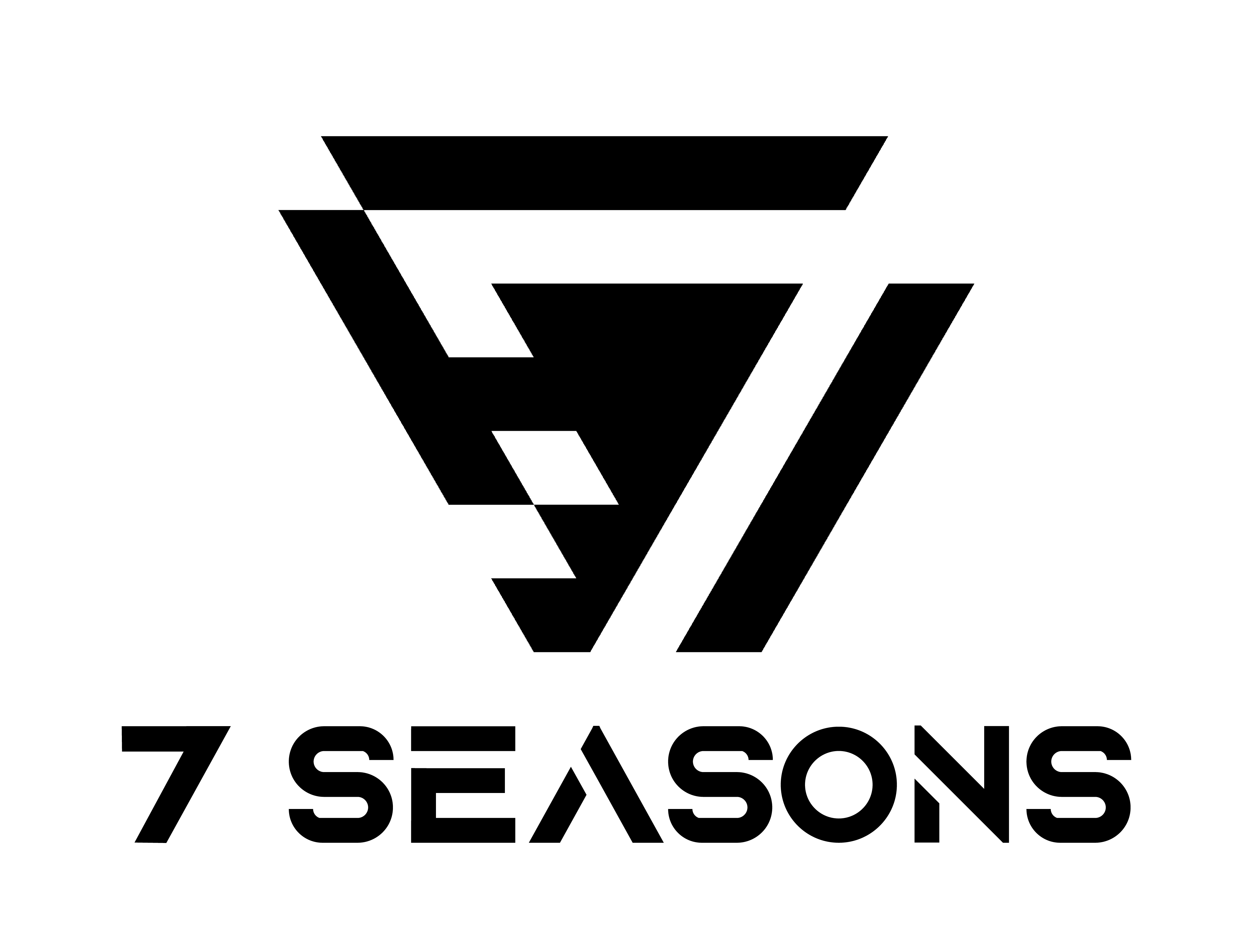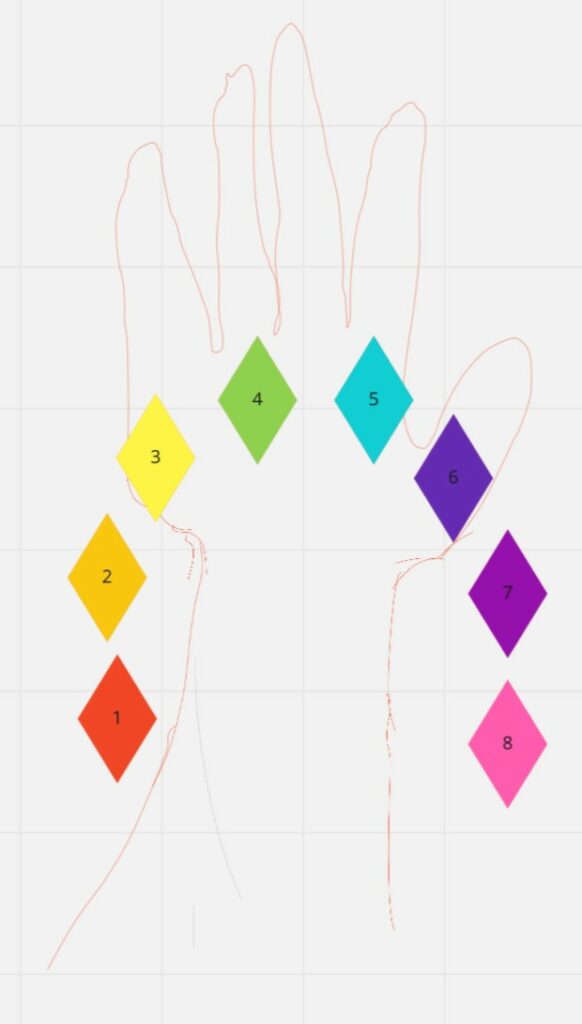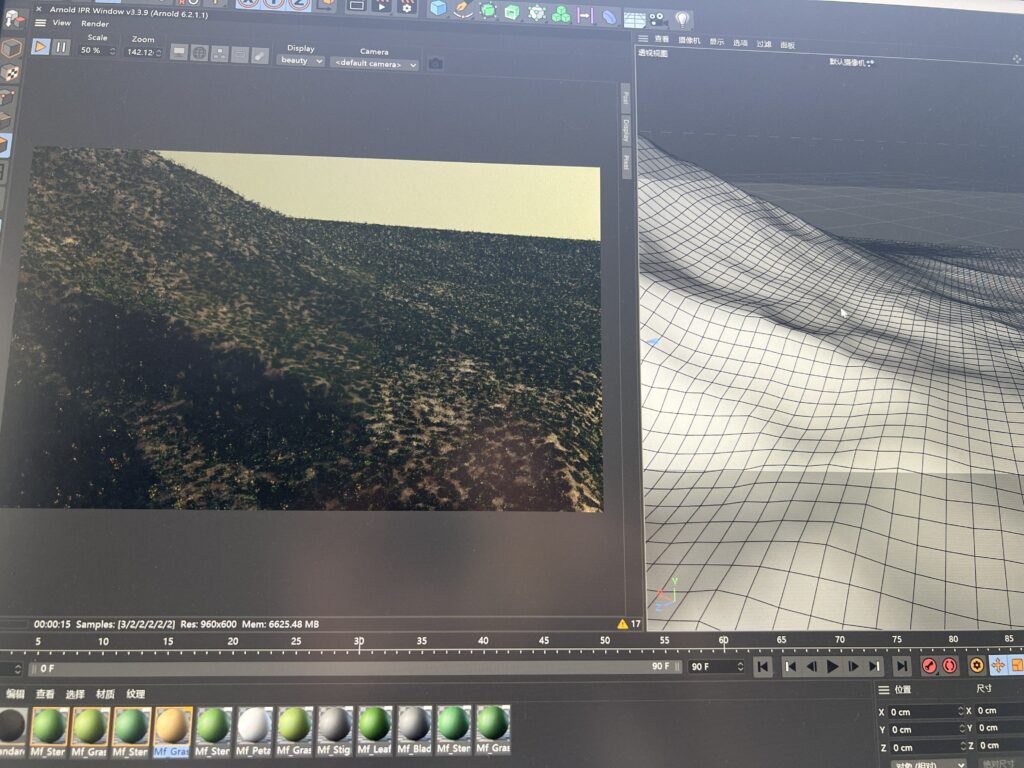After a week long spring break, it was week 8 of the semester. The goal of this week and the next was fairly simple: keep chipping away at this idea of a game concept and refine for clarity.
Design
The holy grail of this project design wise is still this idea of 5 minutes of game play. Our instructors recommended us to be bold in decision making. That is to say, to focus on a single sentence’s worth of a concept, and use that to aggressively guide or reject our decision making.
In addition to being bold about our decision making, the design team also wanted to reorganize the work that was already generated. Building off the verbs generated prior to halves, the team opted to create a mind map in order to visually map out how the verbs would fit in the scope of the entire game. In addition, this enabled the team to see which verbs and parts of the game were lacking.
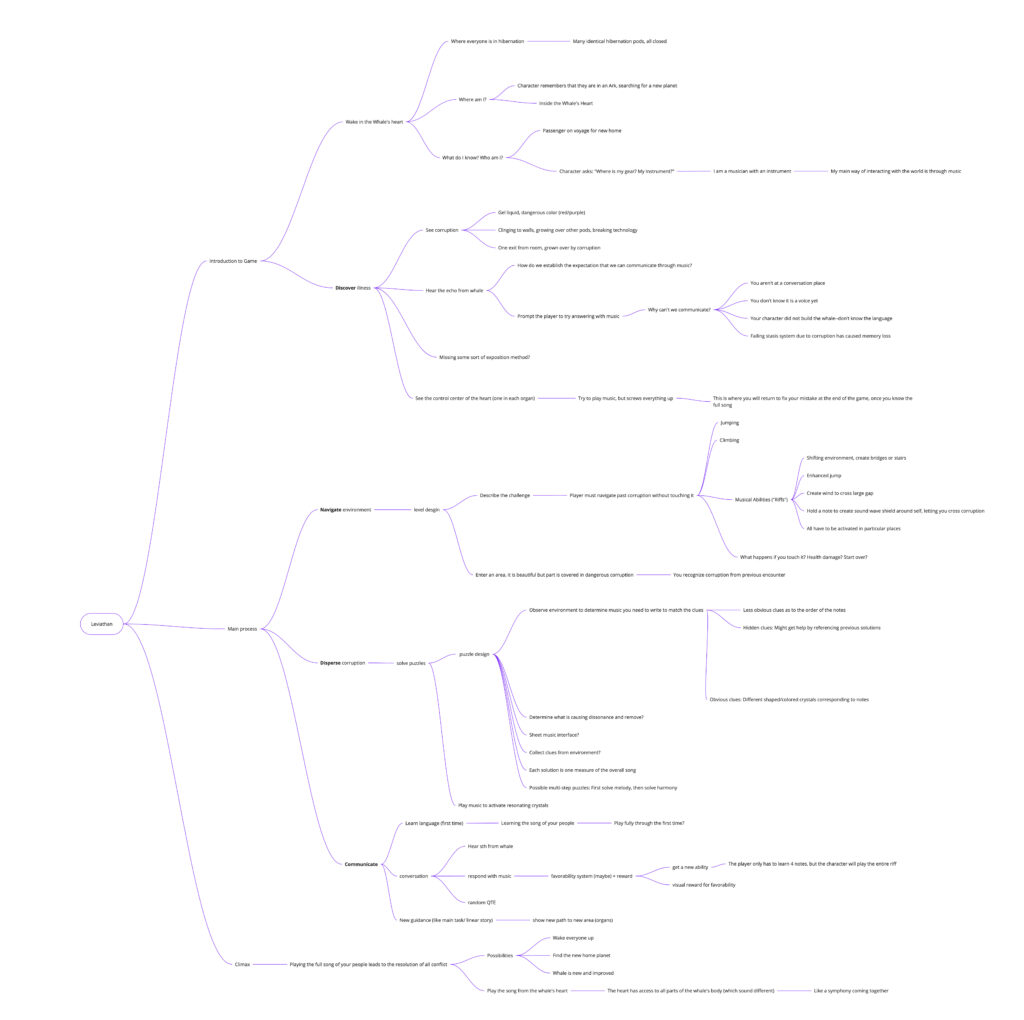
In terms of actually generating mechanics from the verbs, we again consulted with faculty. Chris Klug worked on setting us up with Bob Bates, and expert on adventure games, and meeting with Dave helped provide clarity on how the ideas we already had were leaning towards certain types of mechanics. Dave pushed us to be explicit about being a “music game” versus a “musically themed game”, where the former would strictly be about the player’s understanding of music, and the latter would use music to guide the puzzles and interactions. In that vein, the team needed to think about how our interactions would drive our immersion, and how distinguishing player and character progress could help us prevent misalignment in that regard.
With this advice, the team was ready to create a first iteration of an actual player story with mechanics, making bold decisions along the way. The objective of this first interaction was to be simple – the first or second puzzle that the player would come across. This would constrain the team to make an interaction that was not overly complex and simple enough that a naive player could understand how to solve it. The design team also constrained itself by using environments already generated by the art team, ensuring that the interaction design does not stray too far from the collective understanding of the team.
Art
The goal of the art team was to wrap up any last 2D concept art, and start working on 3D environments as quickly as possible.
Just prior to halves, the faculty gave harsh feedback that the character concept arts did not match the technology level of the world. Building upon this feedback and thinking forward, Joy made another character mood board to investigate desired outfit styles and 3D modeling style. The rest of the team was invited to vote in order to unify the team’s vision for 3D. Using this information, she spent the rest of the week iterating upon the player character design.
Yifan also assisted in this process, with creating some ideas and variations prior to help inspire other directions for the design.
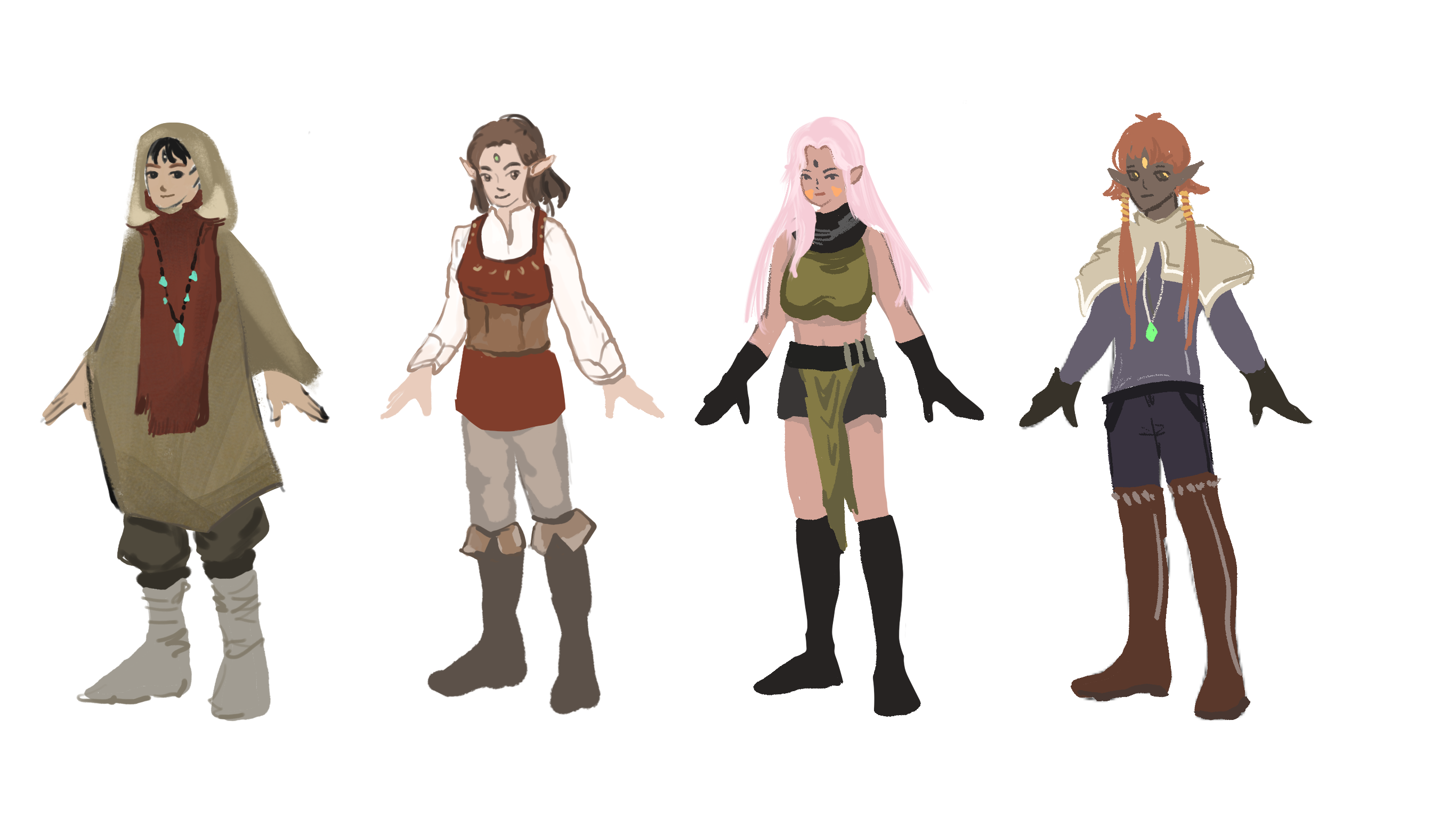
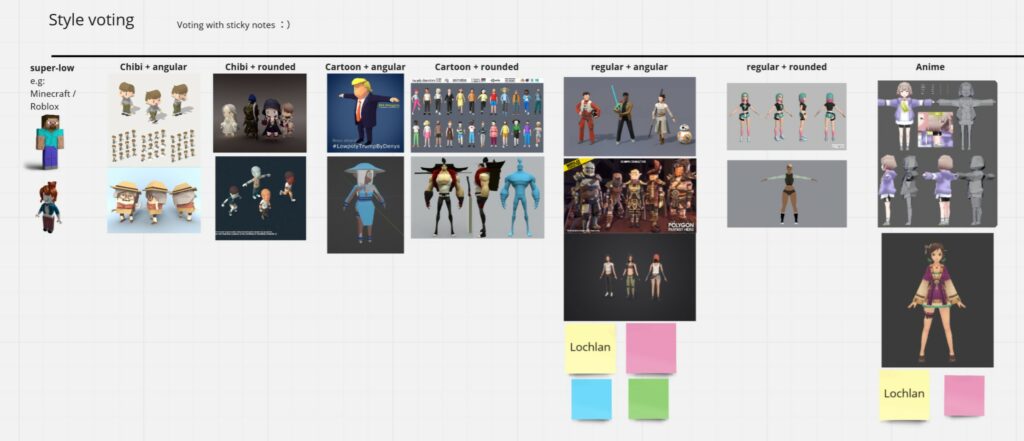
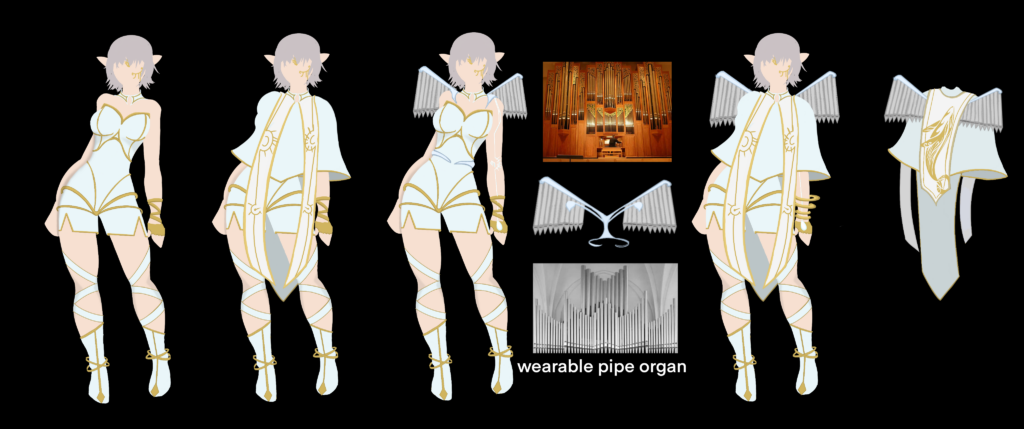
Meanwhile, Harry further drafted detailed concept art for the points of player interaction, while Yifan spent the week getting her feet wet with first iterations of a 3D environment.
